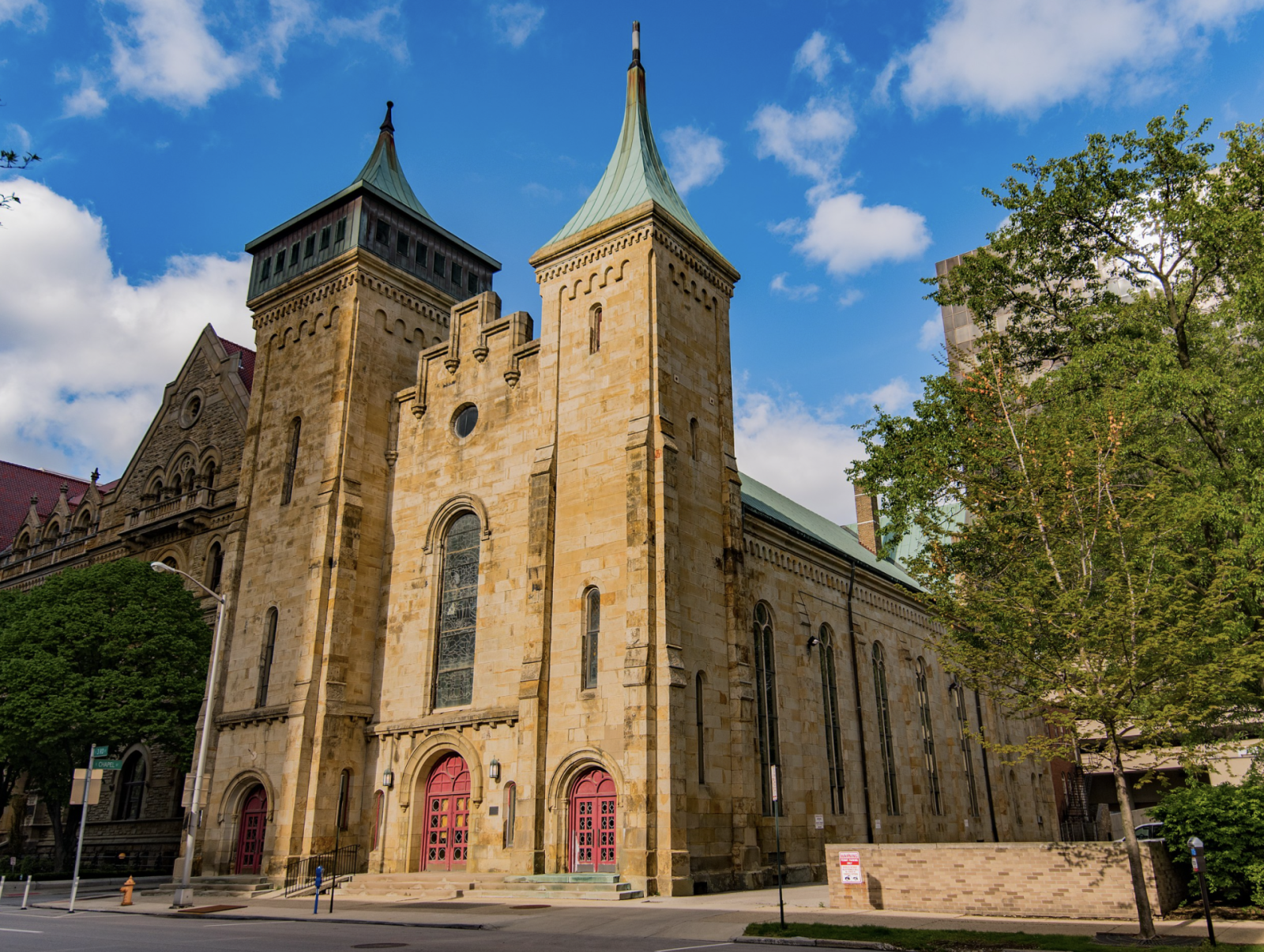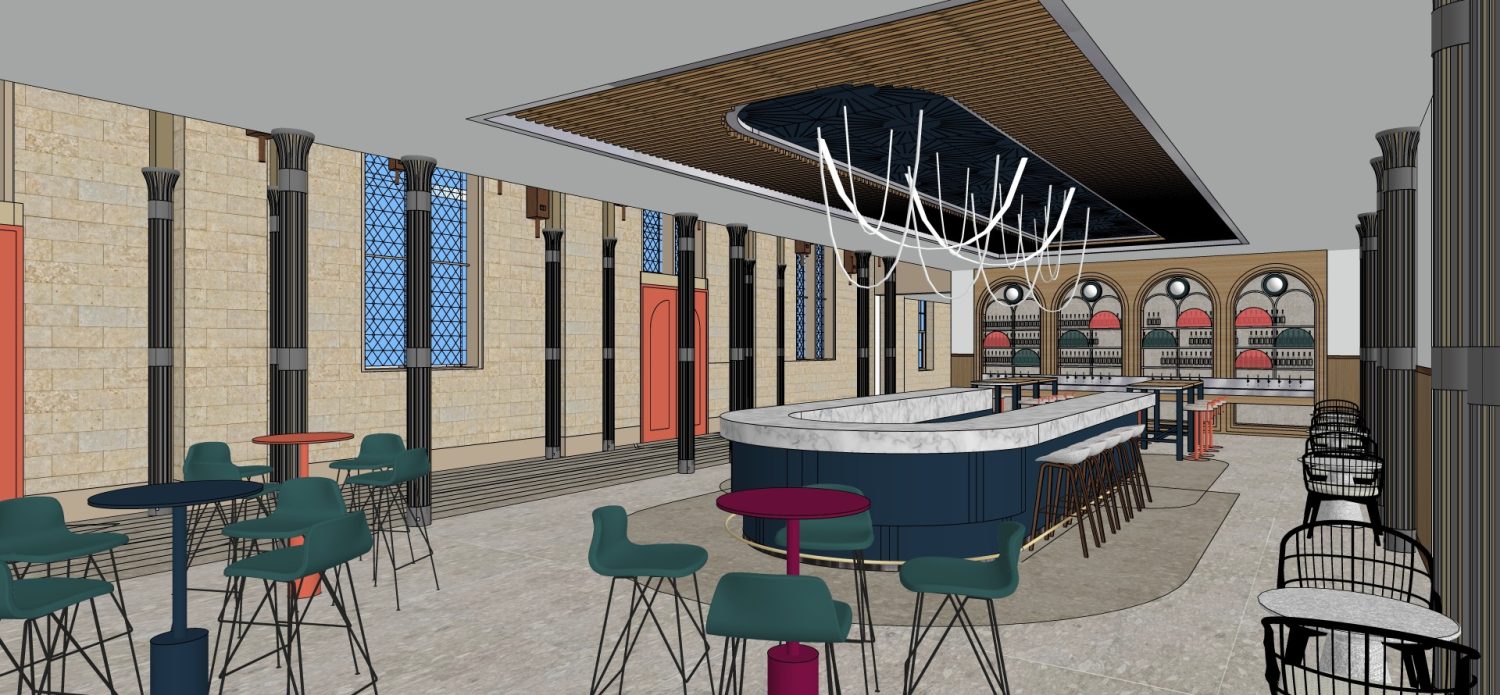Fourth oldest building in Cbus is being renovated into a music venue with 2 bars + restaurant

Concerts, performances, and even really good dirty martinis can all be considered “holy experiences,” and soon, there will be an entirely new meaning to that.
When Columbus Association for the Performing Arts (CAPA) first bought the Central Presbyterian Church 13 years ago, after the congregation officially moved elsewhere, they didn’t necessarily have a plan to renovate it right away. Chad Whittington, CAPA’s CEO, explained that they were focusing on other projects, such as renovating the Ohio Theatre and the Palace Theatre.
More than a decade later, CAPA has a stunning vision for the historic, 1860s-era church located at 132 S. 3rd St., which they say is the fourth oldest building in Columbus – they’re converting it into a music hall, complete with an indoor and rooftop bar, along with a restaurant. “Churches were the original gathering spaces in communities, so it’s only natural that it transitions to another one,” emphasized Jason Gay, CAPA’s Vice President.

But don’t fret – unlike a lot of historic buildings in Columbus that are eventually bought, the Central Presbyterian Church is not being demolished. The 1930s add-on will be torn down, but the actual chapel and surrounding rooms built in 1860 will remain. “It already has great bones,” remarked Whittington. “There’s some water damage, but structurally, it’s already in great shape…for being vacant since 2011. Engineers have already been through and indicated that [the changes] are mostly cosmetic, and the bulk of the time will be creating the support spaces.”
BROUGHT TO YOU BY
The “support spaces” that Whittington is referring to will be two different bars run by CAPA, plus a restaurant/food area, dressing rooms, and spaces to unload vehicles and supplies. One of the bars will be indoors, and another will be a rooftop bar. The renderings show that one of the bars could be a vinyl listening bar, too, which would be Columbus’ first off its kind, and would complement the music venue. And the coolest part? These bars would be open to the public even if there’s no concert or performance taking place. As for the restaurant, Gay said that they’re still passively searching for a food partner with a nonprofit focus.



The stage and standing room for the music performances will take place in the converted chapel area of the former church, complete with original stained glass, dark wooden pews, and gorgeous, original flooring. They’re going to make the building more accessible, which means adding an elevator to the chapel so that patrons can access the second floor seating, which overlooks the stage and standing room.
This isn’t your average music hall though – this is a space that can hold immersive performances, with a stage and audience that can move around, and it’s focused on the community, all-in-all. There will be permanent seating like at other venues, giving the space a lot of flexibility. “This adds a component that brings in new, live audiences,” emphasized Whittington. “This immersive entertainment blends the artist with the audience,” added Gay.

“Everything we do at CAPA has a mission component. There will be popular music shows here, but also affordable, non-profit and social service organizations that we can offer the space to for low-cost,” said Whittington. “It’s not just a music hall, but a community center too.”
Gay also confirmed that they’ll offer 5-6 weddings there per year, too. And if a client, for a wedding or event or concert, isn’t too keen on the giant stained glass with religious imagery, they’ll offer a drape to cover it up.
This project is estimated to cost $14 million. Whittington said that they’re halfway there when it comes to financial support, thanks to local corporations, but, “It’s a project that takes many to make it happen.” Contingent on raising the rest of the funds, CAPA is hoping to start on the project this summer, with a completion date of 2026.
As of now, there’s no name for the venue yet, but we absolutely can’t wait to see how it turns out.
Want to read more? Check out our print publications, (614) Magazine and Stock & Barrel. Learn where you can find free copies of our newest issues here!
BROUGHT TO YOU BY





